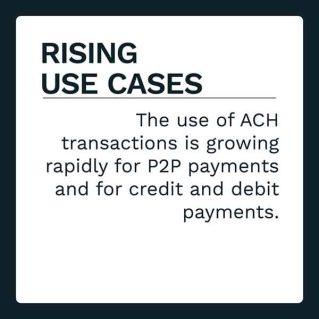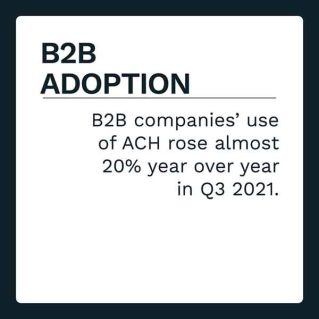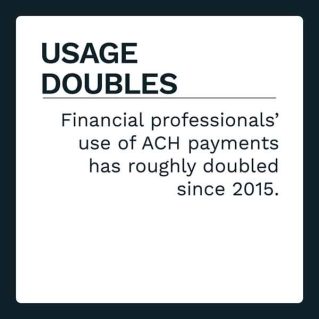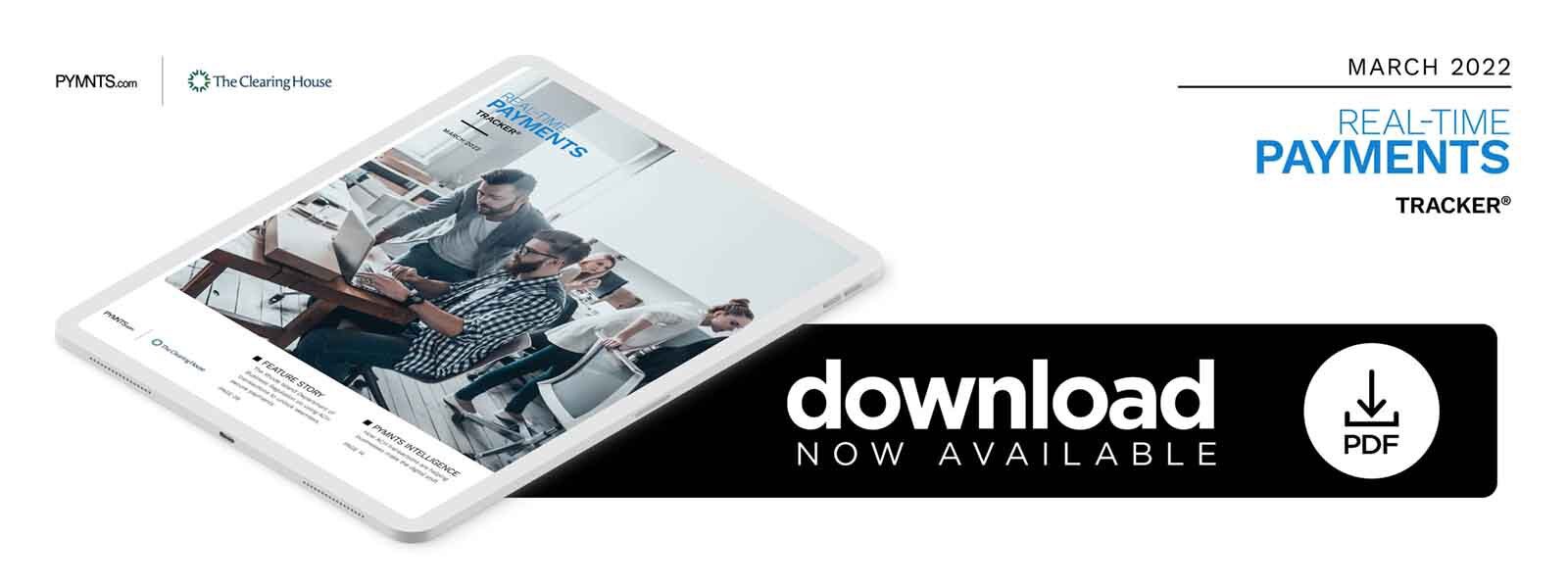State Governments Move to ACH as Checks No Longer Cut It for Consumers and Businesses

One of the greatest pain points for businesses across all sectors during the pandemic has been manual payments. A significant share of organizations continue to use paper checks for various business-to-business (B2B) and business-to-consumer (B2C) transaction needs, but these resource-intensive payments often present logistical challenges for a remote workforce.
Luckily, companies have a growing assortment of digital payment methods at their disposal. One option has taken on a much more prominent role in payment operations in the past several years: automated clearing house (ACH) transactions. These digital transfers allow users to move money digitally between bank accounts, and they typically settle within one to three days.
In the March edition of the Real-Time Payments Tracker®, PYMNTS explores how ACH transactions are helping businesses increase their revenue by enabling them to offer their clients a more seamless payment experience.
Around the Real-Time Payments Space
Checks still play a starring role in the B2B payments space, but new findings suggest this has changed in the past several years, especially during the pandemic. A recent survey found that financial professionals are processing significantly fewer checks than seven years ago, while the share of ACH transactions occurring during the same time frame has doubled.
 Meanwhile, mobile payment technologies have flourished during the pandemic as consumers have sought contactless transaction methods that allow them to pay everyone from friends and family members to businesses. Peer-to-peer (P2P) services Zelle and Venmo, which enable users to make instant payments within the same network, have witnessed particularly impressive growth in the past two years. Zelle, for example, recently announced that its payments volume rose 49% year over year in 2021, while PayPal-owned Venmo reported 57% growth in volume during the same period.
Meanwhile, mobile payment technologies have flourished during the pandemic as consumers have sought contactless transaction methods that allow them to pay everyone from friends and family members to businesses. Peer-to-peer (P2P) services Zelle and Venmo, which enable users to make instant payments within the same network, have witnessed particularly impressive growth in the past two years. Zelle, for example, recently announced that its payments volume rose 49% year over year in 2021, while PayPal-owned Venmo reported 57% growth in volume during the same period.
For more on these and other real-time payments stories, visit the Tracker’s News and Trends section.
Using ACH Transactions to Unlock Seamless, Secure Payments
Governments, businesses and consumers alike are steadily realizing the benefits they can reap from supporting and using electronic payments, particularly ACH transactions. Getting them to grow more familiar with using the payment method could also hold the key to fostering increased familiarity and trust as they move toward faster, real-time systems and other innovations in the years ahead.
In this month’s Feature Story, Beth Dwyer, deputy director of financial services at the Rhode Island Department of Business Regulation, talks about how local and state governments can use ACH to cut down on paperwork and friction when it comes to payments and the remittance information surrounding them to make these processes easier and more efficient.
PYMNTS Intelligence: How ACH Can Help Businesses Offer Clients a More Seamless Payment Experience
 During the pandemic, restrictions on in-person interactions forced businesses to seek digital alternatives to paper checks as manual processes became impractical or even impossible. ACH payments enable money to be moved electronically between bank accounts, and the volume of ACH payments increased 42% year over year in 2020, according to one report.
During the pandemic, restrictions on in-person interactions forced businesses to seek digital alternatives to paper checks as manual processes became impractical or even impossible. ACH payments enable money to be moved electronically between bank accounts, and the volume of ACH payments increased 42% year over year in 2020, according to one report.
It has become one of the primary payment methods in the U.S. for business uses such as paying employees and vendors. ACH’s benefits include speed, a low cost and lack of contact, which is a combination that is leading many organizations to expand its use in the pandemic era as a much-needed and near-total replacement for paper checks.
This month’s PYMNTS Intelligence takes a close look at how ACH transactions are helping businesses increase their revenue by enabling them to save costs while offering clients a more seamless payment experience.
About the Tracker
The Real-Time Payments Tracker®, a PYMNTS collaboration with The Clearing House, examines open banking’s recent growth and how ACH has become the go-to payment processor for its speed, lower costs, ability to improve cash flow and accuracy.
